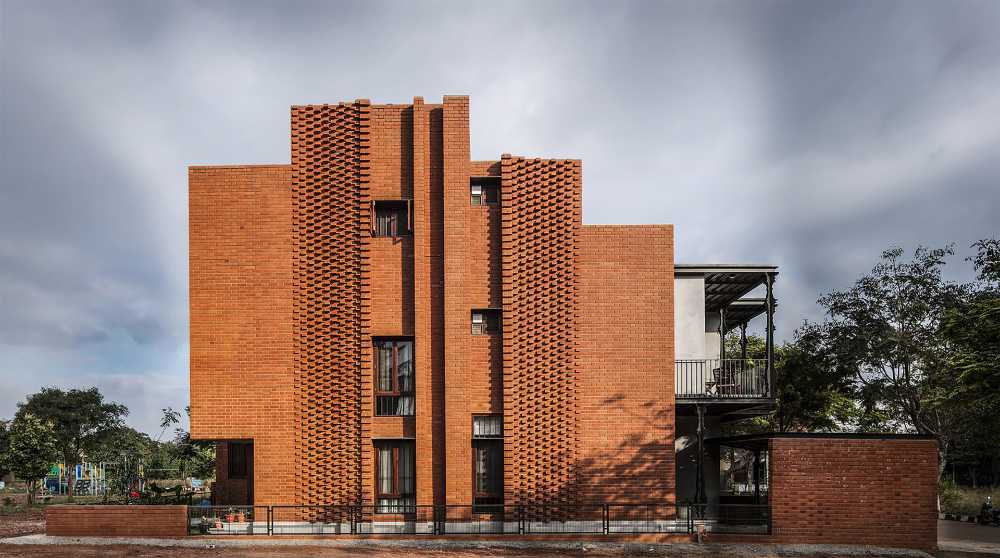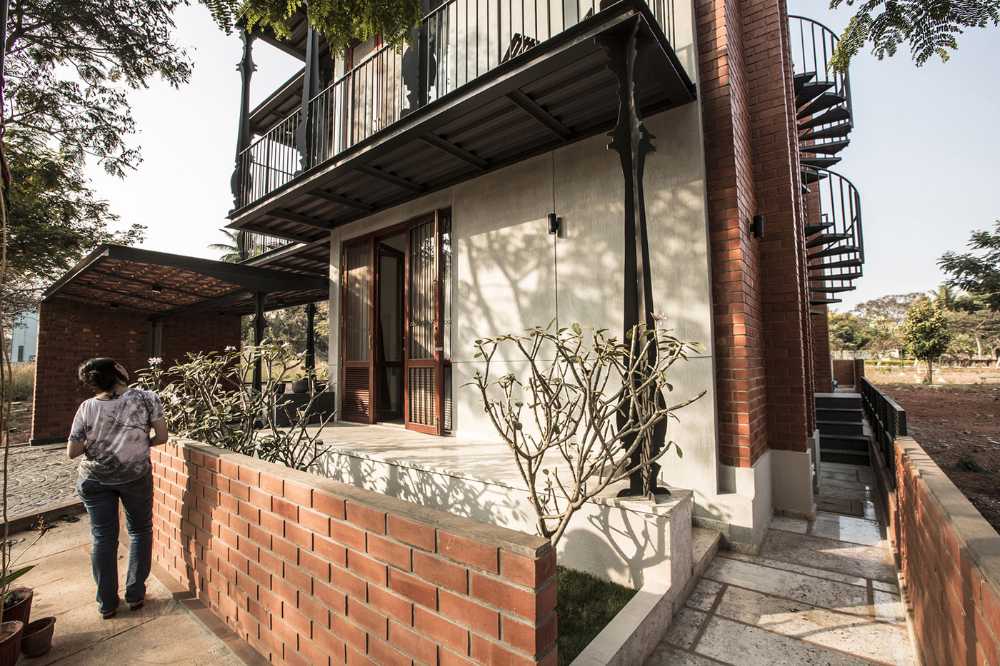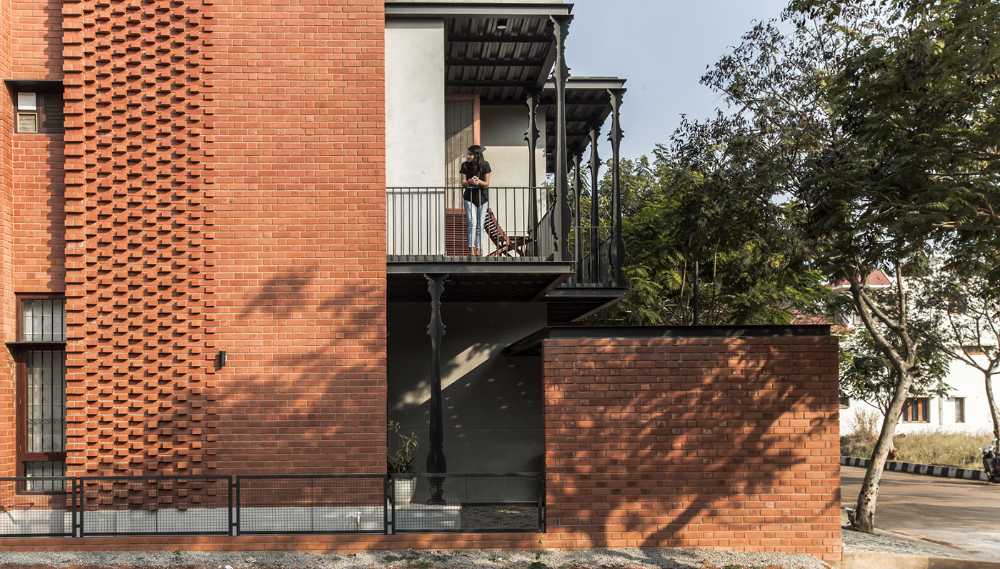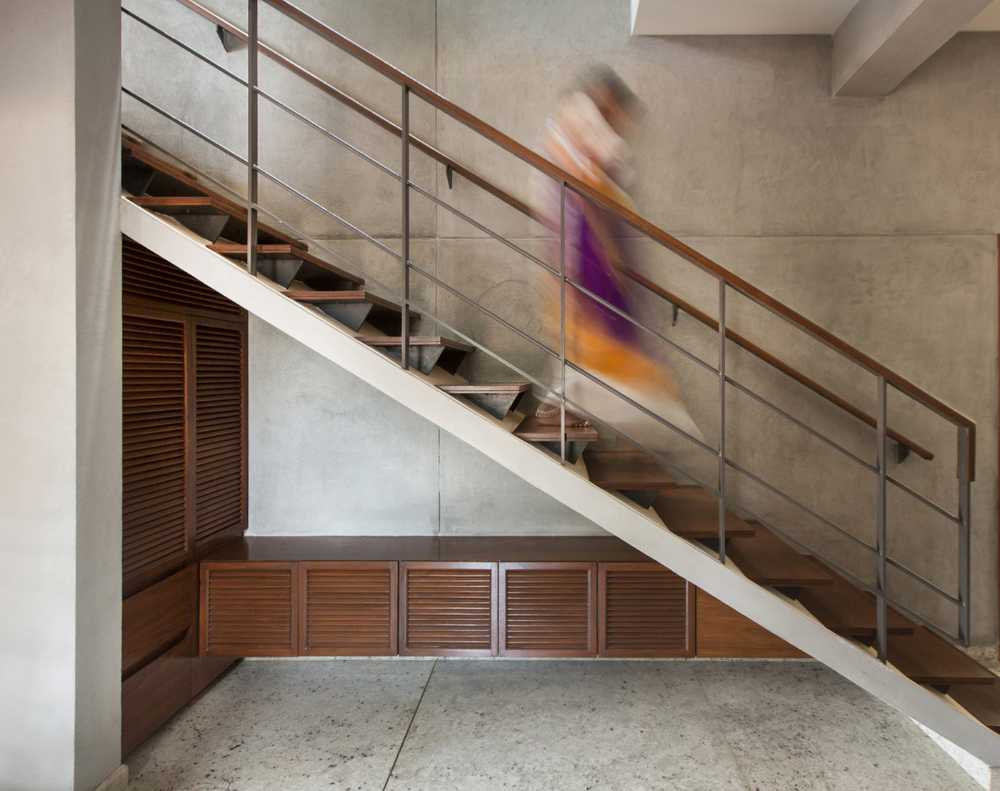The architects of Kamat & Rozario Architecture studied the traditional buildings of Kerala and took inspiration from them for the design of Corbel House. The designers noticed some recurring features in the architectural tradition: the veranda that wrapped around the living spaces; a heavy masonry base on the ground floor with thick arches and carved columns; and a second floor that appeared to be lighter in terms of materials and overall design. These elements are reworked in the front façade of the building


Corbel House. A contemporary residence inspired by the tradition
The design of Corbel House developed from the client's desire for a modern home inspired by the family's roots in Kerala, India
- #Asia
- #India
- #Architectures
- #New construction
- #Residence
- #Habitation
- #Metal
- #Brick
- #Architecture

The carved columns, which are a prominent feature of traditional Kerala architecture, were adopted but with a contemporary twist. The architects reinterpreted them using sheet metal, cut out to match the silhouette of a traditional column and positioned as a cross. These columns frame the front of the house and sit on a large cantilevered balcony. This at the front not only protects the south façade but also allows for ample cross ventilation.
The design has been kept simple. Public and semi-public spaces are on the ground floor along with guest rooms. Private spaces for the developer couple and their children are on the second floor, along with a separate family area

The two sides of the building show the strong presence of exposed brick masonry. The terracotta color makes direct reference to the materiality of Kerala architecture and stands in stark contrast to the light metal balconies. Openings in the masonry are kept minimal to accentuate openness in the front and rear. The undulating brickwork is a playful interpretation of a Mangalore tiled roof surface-another element seen widely in Kerala. The masonry swells to allow for openings and is constructed using Flemish bond. As the brick extends outward, its negative impression is visible on the interior side

The choice of materials for the interior is also inspired by those of the traditional Kerala house. The combination of cane screens with teak wood is an attempt to add that element of nostalgia to an otherwise minimalist interior. The continuous, almost monolithic granite floor further helps accentuate the open floor plan. The house is powered by solar panels placed on the roof of the structure

Gallery
Photo credits
Top image, content and gallery images: Niveditaa Gupta
Drawings: Kamat & Rozario Architecture

















